- Home
- Kathryn Lasky
Mary Queen of Scots
Mary Queen of Scots Read online
Contents
Cover
Title page
France 1553
December 9, 1553: Château Saint-Germain, Seine Valley, France
December 10, 1553
December 11, 1553: Rooftop of the Château
December 12, 1553
December 13, 1553: Royal barge on the Seine en route to Anet
Later
December 14, 1553: Château d’Anet
December 16, 1553
December 17, 1553
December 20, 1553: Château Blois
Later
Fifteen minutes later
December 21, 1553
December 22, 1553
Later
December 24, 1553
December 25, 1553
December 26, 1553
December 27, 1553
December 28, 1553
Later
December 31, 1553
January 2, 1554
January 3, 1554
January 4, 1554
January 5, 1554
Later
January 6, 1554
January 7, 1554
January 9, 1554
January 10, 1554
January 11, 1554
January 17, 1554: Le Louvre Palace, Paris
January 18, 1554
Later
January 19, 1554
January 20, 1554
January 21, 1554
January 22, 1554
Later
January 23, 1554: Just after midnight
January 24, 1553
January 26, 1554
January 27, 1554
February 1, 1554: Château Chambord
February 2, 1554
Later
February 3, 1554
Later
February 4, 1554
February 5, 1554
February 6, 1554
February 7, 1554
Later
February 8, 1554
Later
February 10, 1554
February 11, 1554
February 12, 1554
February 13, 1554
February 15, 1554
February 17, 1554
February 18, 1554
February 19, 1554
February 20, 1554
February 21, 1554
February 22, 1554
February 23, 1554
Later
Later still
February 24, 1554
February 25, 1554
February 27, 1554
February 28, 1554
March 1, 1554
March 2, 1554
March 3, 1554
March 4, 1554: The Inn of the Two Ducks near the
Rochereau Forest
Later
March 5, 1554: Abbey of Fontevrault
March 6, 1554: Convent of the Calvarian Sisters, Chinon
March 7, 1554
March 8, 1554: Château Meudon, near Paris
March 9, 1554
March 10, 1554
Later
March 11, 1554
Later
Midnight
March 16, 1554
March 17, 1554
March 18, 1554: Le Louvre Palace, Paris
March 19, 1554
March 21, 1554
March 24, 1554
March 26, 1554
March 31, 1554: Château Fontainebleau
April 1, 1554
Later
April 9, 1554
April 15, 1554
April 21, 1554
April 22, 1554
April 24, 1554
April 26, 1554
April 29, 1554
May 2, 1554
Two minutes later
May 4, 1554
Later
May 6, 1554
May 7, 1554
May 8, 1554
Later
May 9, 1554
May 12, 1554
Later
May 14, 1554
May 18, 1554
June 1, 1554
June 2, 1554
June 5, 1554
June 7, 1554
June 8, 1554
June 16, 1554: Anet
June 17, 1554
June 18, 1554
June 19, 1554
June 21, 1554
June 23, 1554
July 12, 1554: Chambord
July 15, 1554
July 16, 1554
July 19, 1554
July 24, 1554
July 26, 1554
July 29, 1554
Later
August 1, 1554
August 7, 1554: Blois
August 9, 1554
August 13, 1554
August 15, 1554
August 16, 1554
August 17, 1554
August 18, 1554
August 19, 1554
August 20, 1554
August 21, 1554
August 23, 1554
August 24, 1554
August 26, 1554
September 1, 1554
September 2, 1554
September 10, 1554
September 16, 1554: Meudon
September 17, 1554
September 18, 1554
September 21, 1554: Aboard the King’s royal barge,
one mile from Lyon
Later
October 5, 1554: Meudon
October 10, 1554
October 15, 1554
October 21, 1554
November 15, 1554
November 17, 1554
November 20, 1554
November 21, 1554
November 29, 1554
December 7, 1554: Saint-Germain-en-Laye
Later
Near midnight, December 7, 1554
Epilogue
Historical note
The Stuart–de Guise family tree
Copyright
France
1553
December 9, 1553
Château Saint-Germain, Seine Valley, France
I am for some reason thinking of numbers today as I write on this first page of the diary my dear mother sent me for my birthday, which was yesterday. So I am now eleven years and one day. I was a Princess for only ten months and one day. But I have been a Queen for ten years, three months, and one day. I was crowned Queen when I was a baby, before I could walk. Although I am told I could pull myself up by any table leg, chair, or the fringe of any wall tapestry in the castle. I am Mary, Queen of Scots, but I am far from Scotland. I live in France.
It could have worked out much differently, especially this being my eleventh birthday. For at one time I was to be given in marriage in an agreement called the Treaties of Greenwich to Edward VI, the English King. But the treaty was broken – all for the best, seeing as Edward died just six months ago at the age of sixteen. Now I am to marry Francis, the son of King Henry II of France and his Queen, Catherine de Medici. That was decided after the broken treaty with England, and that is why I live here now and have since I was five years old. This way I can be schooled in the ways of the French court. And thus Francis and I might become good friends before we become man and wife. We are good friends, best friends, and we need not worry about marriage for a long time – until I am at least thirteen or so.
I must go now, for my uncles de Guises are arriving for luncheon. They are one day late for my birthday, as the roads between here and Meudon were impassable because of heavy rains. My old nurse, Janet Sinclair, will have fits if my hair is not tended to properly. I have red hair – like pale fire, almost blonde. Some think it is my best feature. I think it is just hair and requires too much time even if I am a Queen.
PS How, thinking so much of numbers
this day, could I forget to mention that my lucky number is four? Why is four my lucky number? Because of my four Marys, my best friends and companions since I was a baby. They came with me here to France all the way from Scotland. They are Mary Seton, Mary Fleming, Mary Beaton, and Mary Livingston. They are known by everyone as the Queen’s Marys. I think of them as my lucky clover leaf.
December 10, 1553
My uncles de Guises – Francis, the warrior, and his wife, my dear aunt, Anne d’Este, who is expecting a child come spring, and Charles, Cardinal of Lorraine – were all waiting. It is lucky that I took care with my hair, or rather that my chambermaid, Minette, did. For indeed my grandmother, my mother’s mother, Antoinette de Bourbon, had sent a diamond circlet as a gift to weave through my plaits, which Minette had arranged in a ring on top of my head. “Charmante!” my uncles and aunt exclaimed as I entered the salon, and I felt my face flush red. This sudden flushing is a terrible burden for one of my complexion. It does not look like the rouge of the court ladies. Instead one might think I am catching on fire. And there is simply no controlling it. Oh, well. My aunt brought me yards of cloth of gold, for she says I am growing so fast and will need some new gowns for grand balls. Janet Sinclair, my nurse, sighed with delight at the thought of me floating about in cloth of gold, but I saw Madame de Parois’s mouth twist into a hideous little smirk. Madame de Parois is my governess and she is a vexation. No, worse than a vexation. She is nasty. A small-minded woman with a face like rising dough – floury white and puffy. She resents any pleasure anyone has and always seems to think they are having these pleasures at her expense. One would have thought she had paid for the cloth of gold and not my uncles.
I almost know what each of my uncles is going to say before he says it. Uncle Francis – they call him le Balafré, the Scarred One, because of a wound he received at the Siege of Boulogne in 1545 – always asks whether my mother, Marie de Guise, has written and whether he can see her letters. Mother does not like me to show her letters to anyone. There are things that only mothers and daughters should discuss. But Uncle Francis always presses. So we have thought of a way around this. Mother sends me false letters to show him. It is quite devious. I do not like to think of myself playing tricks on my uncle, but I am so far from my mother, deprived for so many years of her company, that I feel there should be something that is just ours.
My uncle the Cardinal always inquires about my studies – especially my progress in Latin. They all love me terribly much. They praise me constantly. Even Uncle Francis with that scar that slashes across his face like a piece of lightning torn from the sky – his eyes soften when I come into the salon. I am so loved by my uncles and aunt and by the other children of Queen Catherine and King Henry – the Princesses Claude and Elizabeth and the Dauphin Francis and the babies. So why do I still feel homesick for Scotland? And why do I still feel the sharp pain of my mother’s leaving from her visit as if it were yesterday and not two years ago?
PS I nearly forgot to mention that Aunt Anne, in addition to bringing me the cloth of gold, also brought me something else of gold – a little golden lapdog. Now between the four Marys and myself we have six lapdogs! This new one is so tiny she could fit in my muff! She is adorable. I think I shall call her Puff, for she reminds me of a fluffy little cloud.
December 11, 1553
Rooftop of the Château
My uncles are still here. We had a little dance last night. My best dance partner of the evening was Aunt Anne. We know each other’s rhythms. Francis is a terrible dancer. No rhythm and he has not the wind to jump in the galliards, which have much jumping. Always after a galliard or a pavane, he must take a rest. The King and Queen are not here at the moment but at Château Fontainebleau. That is why it was a petit bal, or little dance, instead of a grand one. It was all very merry, and the pastry chef made me a second birthday cake with sugar thistles and harebells, the flowers of Scotland. I wondered as I bit into the cake if I might ever see those flowers again. The flowers of France are much sweeter, but I myself miss the spiciness of the blooms of Scotland. I can remember them. No one believes me but I can!
I read about a bird once – the cuckoo – who lays its eggs in another bird’s nest. When the eggs hatch they are raised by that other bird. I sometimes wonder if those birds ever miss their mothers as I do. I miss mine terribly. It has been two years, three months, and ten days since I last saw her. She came for a visit from Scotland then. It was the first time I had seen her since I had left. She gave me a locket with her portrait, which I wear around my neck. I miss her most on my birthday. It is often why I like to be alone – even the day after my birthday. It is why I have come up here to the roof of the château. I have tucked a warm apple pancake wrapped in a handkerchief into my pocket. I miss my mother, but I feel much better up here. Even the Marys know to let me be alone when I come to the roof.
It is a roof garden with immense tubs and pots planted with shrubs, and in the spring and summer there are flowers. Now the shrubs are all wrapped in heavy cloth, which protects them from the winter cold. They look like little creatures hunched against the sharp wind. I am warm. I have worn the dress of Scotland up here, the tunic, or leine, as we call it, this one dyed bright orange and over the leine a brat, which is a long rectangular piece of wool that is worn as a mantle. On top of it, I drape the pelt of a wolf, which cuts the wind and the cold. The French think this costume most outlandish. “Barbaric,” Madame de Parois exclaims whenever she sees me in it. But I like it.
Here in this garden pressed between the sky and the château, I can rest my elbows on the low stone wall at the edge of the roof and look down at the Seine flowing below. It is like a dark satin ribbon in the winter light, and the reflection of the château quivers on its surface. One could almost believe it is unreal – a fairy palace. But it is not. It is made of stone and quite real. And there are no fairy creatures but a squat, angry Queen and a very handsome King and their six children with whom I have played and learned lessons and hawked and skated and danced. Of course some of them are just babies and cannot yet do all that. But we teach one another. Mary Beaton is such a strong, strapping girl that she can even skate with a baby tied to her back. Little Charles loves that. He digs in his tiny heels as if he were a rider on a horse and says giddy-up! Mary Beaton just laughs.
December 12, 1553
All of us children are so excited. Francis was the first to tell me the wonderful news. He burst into my room this morning, nearly knocking down Minette as she was fixing my hair. “We are to go to Anet!” he shrieked. And then Princess Claude and Princess Elizabeth came running in, squealing with delight. Anet is just about our favourite place to go. It is our favourite because it is the château of Diane de Poitiers, the King’s mistress. Diane is the loveliest, most beautiful woman in the world. For all her beauty and elegance she seems to understand children perfectly. She is not young – she is near fifty years – but she can play with us as if she were twelve years old. She thinks up the most wonderful games – contests and treasure hunts with clues.
“Why?” I shouted. “Why ever are we going to Anet? I thought we were supposed to be going directly to Château Blois to join the King and Queen for holidays.”
“We shall but not directly,” Elizabeth said. “There is sickness on that route so we must go by way of Anet. It will be safer.”
“What will the Queen say?” I asked.
Francis raised his spindly shoulders and turned his palms toward the sky as if to ask how I could be so dense. “Would she want us to die? Better to expose us to Diane de Poitiers than to disease.” We all laughed because we know that in Catherine de Medici’s mind, Diane is almost as bad as a disease.
December 13, 1553
Royal barge on the Seine en route to Anet
We left before daybreak and I have been out on the deck the entire time. It is chilly, but I carry my muff and I carry Puff in it. Yes, the dear little lapdog tha
t Aunt Anne gave me fits in with just her pink nose sticking out. I can feel her little heart beating on my fingertips. I love this time on the river. I like to watch the night sky grow thin and pale as its darkness turns to grey. They wouldn’t let Francis stay on deck, as they fear he’s coming down with a sniffle or worse yet, ague. It is terrible when he gets the ague. One minute he is shivering cold and the next he is sweating, and it gives him terrible cramps in his legs. But Princess Elizabeth keeps me company, along with three of the four Marys. Mary Fleming is a lazybones and would never rise before the sun. We are all writing in our diaries. Princess Elizabeth is eight but very mature for eight. She wants to be like the big girls, so beside me she writes in a diary. She keeps asking us how to spell words.
Later
I was so excited about going to Anet and seeing dear Diane again that I forgot to tell you even more exciting news. Before my uncles left, it was decided that I should have my own household! When talk first came of this a few months ago, I was nervous. I thought it meant that I would never be able to see the royal children. That I would have a house or château apart, I mean, rather like Diane de Poitiers. King Henry is always refurbishing a new château for her. She is with us only sometimes. But this is not the same. It really means that I shall have my own domestic staff, and it shall be paid for by the treasury of Scotland. My uncles think that I am treated shabbily or, more to the point, that Queen Mother treats me so. But I am told that there is a good chance that I can add not only a laundress but also an usher of the chamber. This will help me greatly in planning entertainments. And I certainly intend to do so. I am going to give my own petit bals and lots of hunting weekends and dinner parties. And I’ll get to decide on everything from food for the dinner parties to the decorations. I must hire a good pastry chef. I think I shall give some skating and hawking parties, too. I hope my mother will allow me to choose Master Rufflets as my usher. For although he is quite ancient, he is kind and good. In fact I named my falcon after him – I just dropped the t. So the bird is Ruffles.
December 14, 1553
Château d’Anet
I am so tired I can hardly write. But it feels so good to be here, and to arrive on a moonwashed night into the loving arms of our Diane is heaven – pagan heaven, I daresay. Although Diane is a most devout Catholic, her symbols are those of the Roman hunting goddess for whom she is named: Diana, goddess of the hunt and of the moon. As we approached, our excitement mounted. Even the babies, Charles and little Henry, were squealing. We all tried to be the first one to spot the glints of the stag’s horns. For indeed, perched on the very top of the entrance arch to the château is a magnificent stone stag with immense antlers. A hound flanks him on either side. All of Anet is made of Vernon stone, which is white with traces of jet black – the colours of Diane de Poitiers. On this moonlit night the château shimmered with an intensity that took our breath away. Suddenly we all fell silent as we caught sight of Diane. She was standing in the portal of the arch in a dress of white embroidered with silver crescents. Her sleek greyhound dogs were at her feet. Her skin was luminous in the moonlight. I think a little gasp caught in every single one of our throats – even the babies’. She is so unlike any earthly lady.

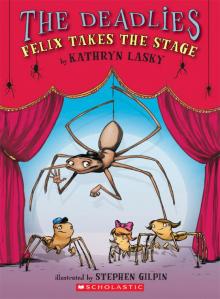 Felix Takes the Stage
Felix Takes the Stage Lucy
Lucy Lone Wolf
Lone Wolf Broken Song
Broken Song The Shattering
The Shattering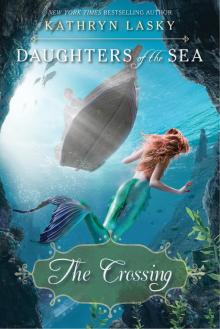 The Crossing
The Crossing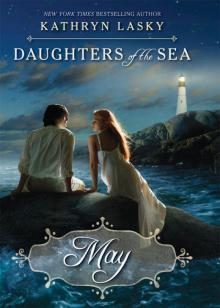 May
May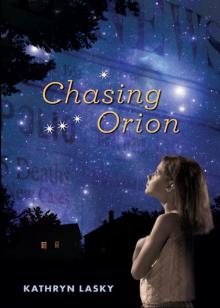 Chasing Orion
Chasing Orion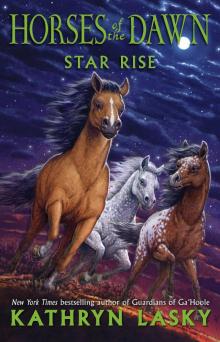 Star Rise
Star Rise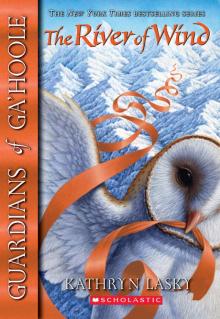 The River of Wind
The River of Wind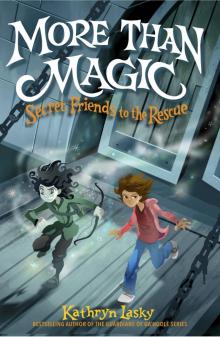 More Than Magic
More Than Magic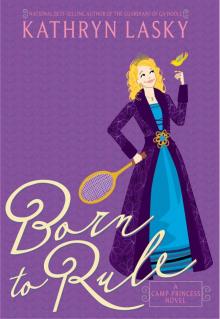 Born to Rule
Born to Rule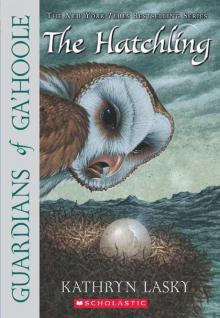 The Hatchling
The Hatchling The Rescue
The Rescue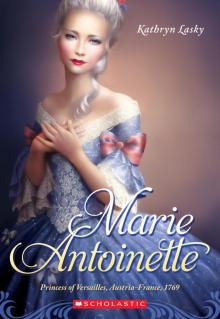 Marie Antoinette: Princess of Versailles, Austria - France, 1769
Marie Antoinette: Princess of Versailles, Austria - France, 1769 The War of the Ember
The War of the Ember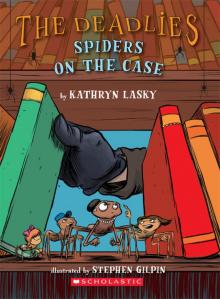 Spiders on the Case
Spiders on the Case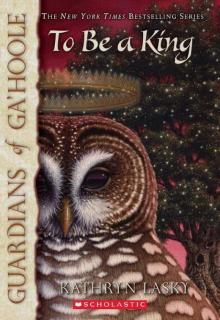 To Be a King
To Be a King The Last Girls of Pompeii
The Last Girls of Pompeii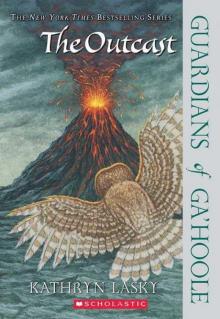 The Outcast
The Outcast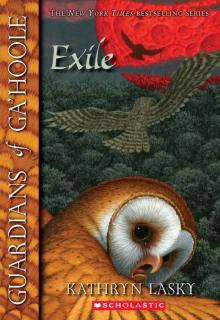 Exile
Exile Night Witches
Night Witches Spirit Wolf
Spirit Wolf The Quest of the Cubs
The Quest of the Cubs Frost Wolf
Frost Wolf The Keepers of the Keys
The Keepers of the Keys The Extra
The Extra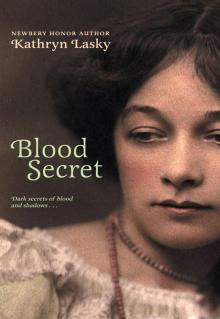 Blood Secret
Blood Secret Watch Wolf
Watch Wolf Blazing West, the Journal of Augustus Pelletier, the Lewis and Clark Expedition
Blazing West, the Journal of Augustus Pelletier, the Lewis and Clark Expedition The Capture
The Capture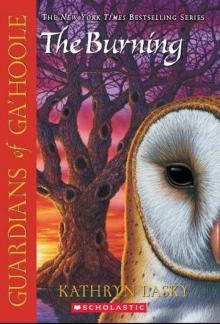 The Burning
The Burning The Journey
The Journey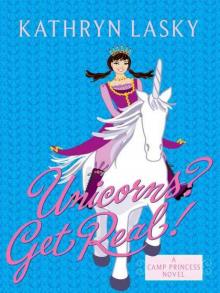 Unicorns? Get Real!
Unicorns? Get Real!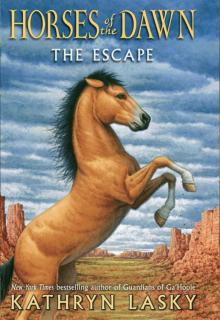 The Escape
The Escape Star Wolf
Star Wolf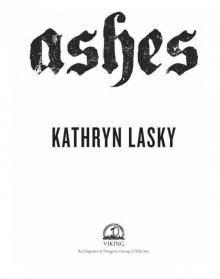 Ashes
Ashes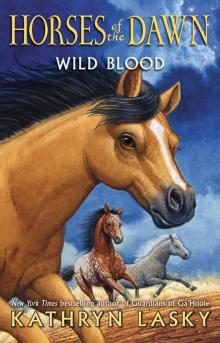 Wild Blood
Wild Blood Tangled in Time 2
Tangled in Time 2 The Siege
The Siege Hannah
Hannah Elizabeth
Elizabeth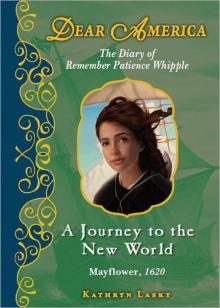 A Journey to the New World
A Journey to the New World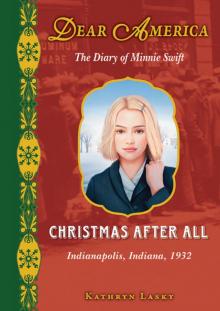 Christmas After All
Christmas After All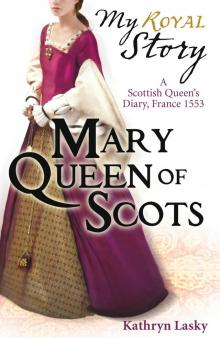 Mary Queen of Scots
Mary Queen of Scots